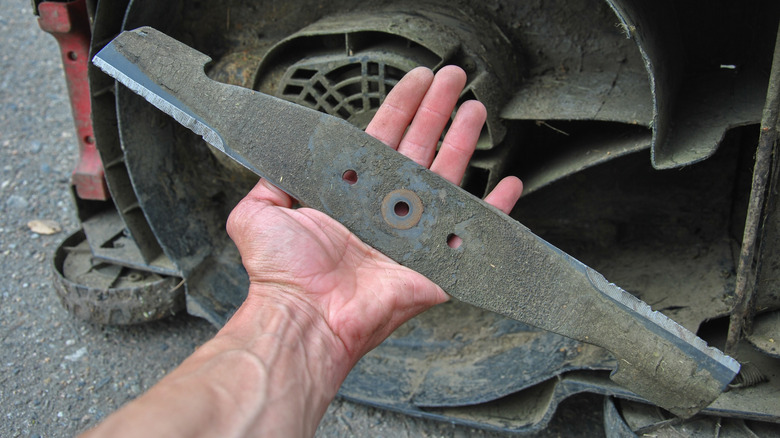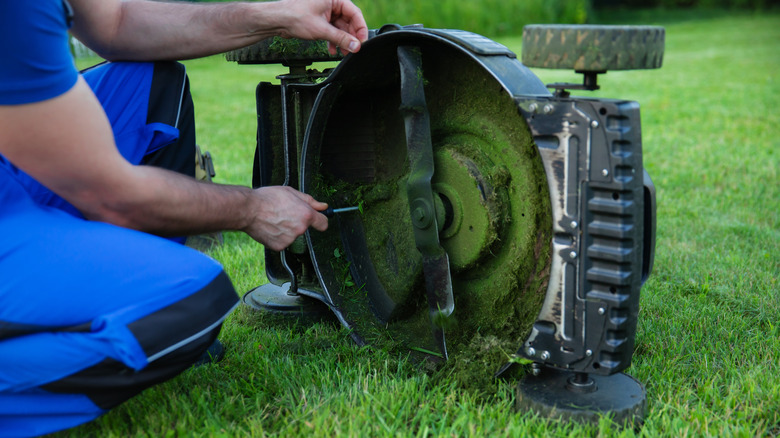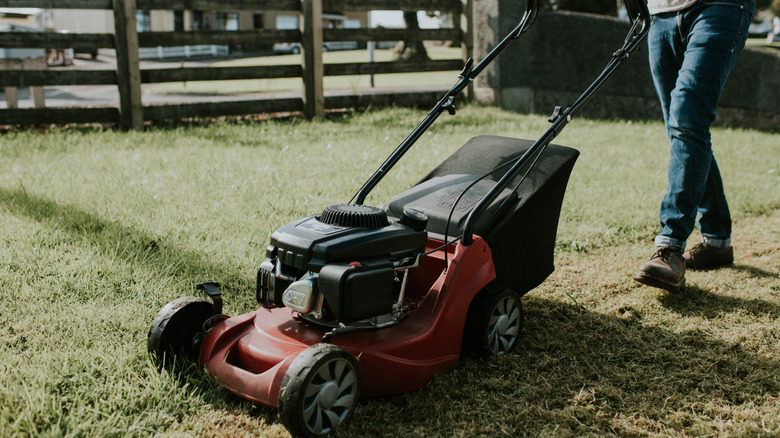Which Side Of A Lawn Mower Blade Goes Up? (And What Happens If It's Upside Down)
Swapping out a mower blade might seem like a straightforward task — unbolt the old one, slap on the new one, and you're done. But there's one detail that trips up more people than you'd think: which side of the blade is supposed to face up? Believe it or not, flipping that blade the wrong way can do serious harm, similar to using a wet lawn mower. It can actually wreck your grass, damage your mower, and cost you more time and effort than you signed up for.
Lawn mower blades aren't symmetrical tools. They're engineered with specific curves, angles, and edges to cut cleanly through grass. The sharp edge always needs to face downward, toward the grass, while the dull, curved part should point upward toward the mower deck. Many blades are stamped with markings like "This Side Up" or "Toward Grass," but if yours isn't labeled, a little knowledge of blade design can go a long way.
What happens if you install it upside down?
A correctly installed blade cuts cleanly by spinning with its sharpened edge leading the way. If it's upside down, though, the dull edge hits the grass, and that doesn't really cut anything at all. Instead of a crisp trim, you'll see grass that looks shredded, torn, or bruised. This leaves your lawn looking patchy, with high chances of slow growth over time. You might also notice clumps of grass left behind, as the blade fails to cut cleanly and struggles to throw the clippings evenly. Over time, this can lead to frustrated mowing sessions and an unhealthy-looking lawn, even if you use the lawn mower from the best brands.
That's not the only issue. The curved wing of the blade, which is meant to face up toward the deck, helps create suction that lifts the grass for an even cut. When flipped, that lift disappears, causing patchy clippings, uneven mowing, and extra strain on the engine. Prolonged use can also damage the crankshaft, bend the blade, or loosen the mounting bolt. If your mower suddenly vibrates more than usual or the grass looks ragged, the blade might be installed the wrong way.
Tips for blade maintenance and sharpening
Once installed correctly, keeping your lawn mower blade sharp is key to a healthy lawn. Most lawn mower blades need to be sharpened (and balanced) every 20–25 hours of mowing, though this can vary depending on the type of grass and terrain. If you mow over sticks, rocks, or thick patches, the blade may dull even faster. Use a file, angle grinder, or rotary tool, and only sharpen the edge that faces the grass. Avoid over-sharpening, as blades don't need to be razor-sharp. A clean, even edge on both sides is enough for smooth cuts and balanced rotation.
And remember, not all blades are created equal. For example, the mulching blades have a more curved shape and raised flaps for chopping clippings finely. High-lift blades are best when you want the mower to collect grass clippings in a bag, while low-lift ones suit sandy soil. Don't forget to match the blade to your mower's specs — size, hole diameter, and design, for safe and efficient performance. A properly matched and sharpened blade not only makes your job easier but also keeps your lawn looking its best.


